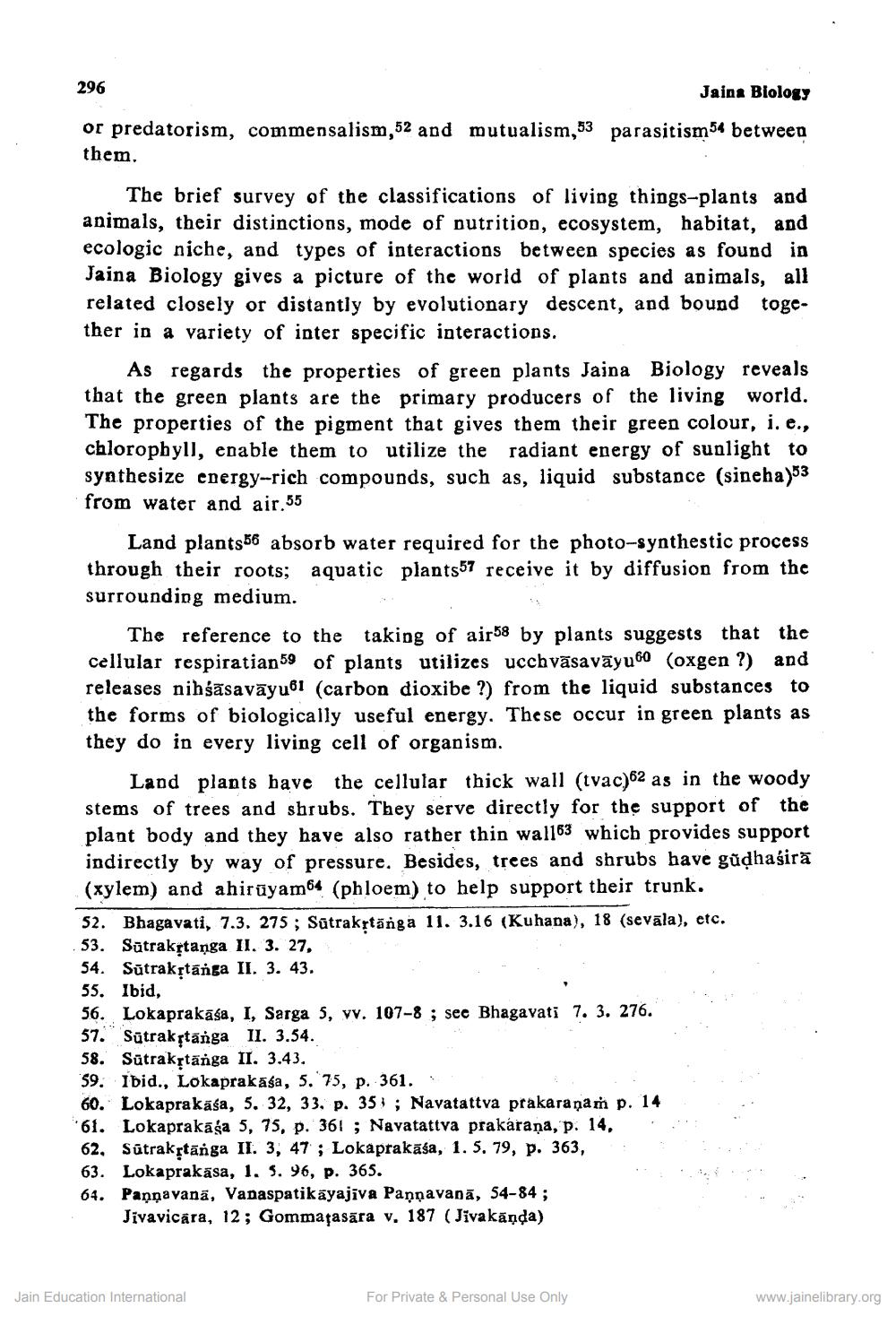________________
Jaina Biology
or predatorism, commensalism,52 and mutualism,53 parasitism54 between them.
296
The brief survey of the classifications of living things-plants and animals, their distinctions, mode of nutrition, ecosystem, habitat, and ecologic niche, and types of interactions between species as found in Jaina Biology gives a picture of the world of plants and animals, all related closely or distantly by evolutionary descent, and bound together in a variety of inter specific interactions.
As regards the properties of green plants Jaina Biology reveals that the green plants are the primary producers of the living world. The properties of the pigment that gives them their green colour, i. e., chlorophyll, enable them to utilize the radiant energy of sunlight to synthesize energy-rich compounds, such as, liquid substance (sineha)53 from water and air.55
Land plants56 absorb water required for the photo-synthestic process through their roots; aquatic plants57 receive it by diffusion from the surrounding medium.
The reference to the taking of air58 by plants suggests that the cellular respiratian59 of plants utilizes ucchvāsavāyu60 (oxgen ?) and releases nihsasavayu61 (carbon dioxibe ?) from the liquid substances to the forms of biologically useful energy. These occur in green plants as they do in every living cell of organism.
Land plants have the cellular thick wall (tvac)62 as in the woody stems of trees and shrubs. They serve directly for the support of the plant body and they have also rather thin wall63 which provides support indirectly by way of pressure. Besides, trees and shrubs have güḍhasira (xylem) and ahirüyam64 (phloem) to help support their trunk.
52. Bhagavati, 7.3. 275; Sūtrakṛtänga 11. 3.16 (Kuhana), 18 (sevāla), etc. 53. Sutrakṛtanga II. 3. 27,
54. Sūtrakṛtānga II. 3. 43.
55. Ibid,
56. Lokaprakasa, I, Sarga 5, vv. 107-8; see Bhagavati 7. 3. 276.
57. Sutrak tanga II. 3.54.
58. Sütrakṛtänga II. 3.43.
59. Ibid., Lokaprakasa, 5. 75, p. 361.
60. Lokaprakäsa, 5. 32, 33. p. 35; Navatattva prakaraṇam p. 14 61. Lokaprakāga 5, 75, p. 361; Navatattva prakaraṇa, p. 14,
62. Sūtrakṛtänga II. 3, 47; Lokaprakāśa, 1. 5. 79, p. 363,
63. Lokaprakasa, 1. 5. 96, p. 365.
64. Pannavana, Vanaspatikāyajiva Pannavana, 54-84; Jivavicara, 12; Gommațasara v. 187 (Jivakāṇḍa)
Jain Education International
For Private & Personal Use Only
www.jainelibrary.org




